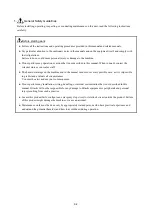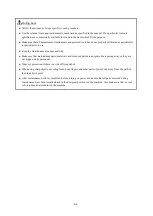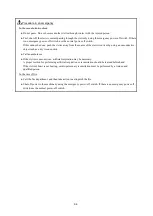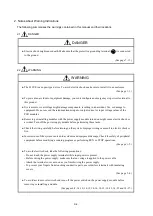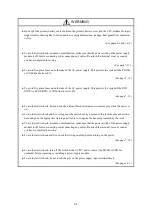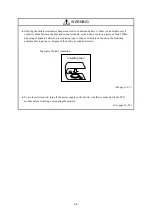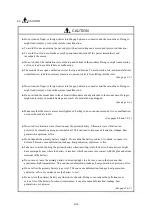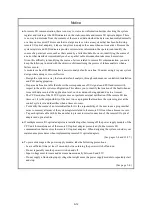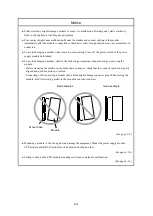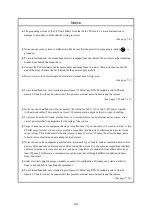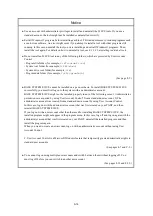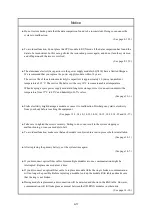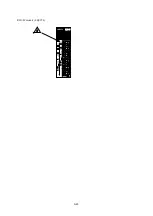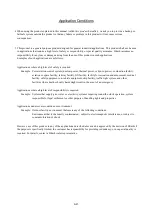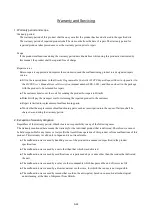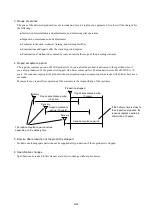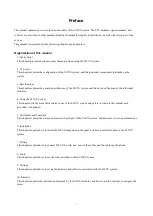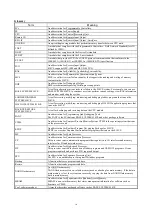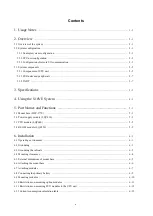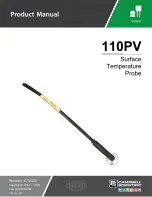
S-15
Notice
●
The grounding system of the CPU unit differs from that of the PI/O unit. To avoid malfunction or
damage to a module, confirm that the wiring is correct.
(See page 7-8.)
●
Noise can cause the system to malfunction. Make sure that the protective grounding terminal ( ) is
grounded.
●
To avoid malfunction, the mount base must be insulated from the cabinet. Do not remove the insulating
bushes from behind the mount base.
●
Connect the FG terminals of adjacent modules and mount base in a daisy chain, and then connect the
end of the daisy chain to the FG terminal of the power supply module.
●
Do not connect the FG terminal of a module to a mount base fixing screw.
(See page 7-9.)
●
To avoid malfunction, set a terminating resistance (150
Ω) at any RI/O-IF module ports to which a
remote I/O cable will not be connected. This prevents external noise from entering the system.
(See pages 7-14 and 7-15.)
●
Noise can cause malfunction. Do not harness the wiring for 100 V AC or 100 V DC power together
with network cables. There must be at least 100 mm separation between the two types of cabling.
●
To protect from short circuits, provide fuses or circuit protectors in any external power source. Use a
circuit protector that is appropriate for the rating of the system.
●
Surge voltage can cause equipment damage or malfunction. If you connect a coil (such as a relay) to the
PCsOK output circuit, you must also provide a surge absorption diode or other means to protect from
surge voltage. This diode must withstand reverse voltage of at least 10 times the circuit voltage, and a
forward current matching or exceeding the load current.
●
Noise can cause the equipment to malfunction. Keep each type of cable, such as communication cables,
power cables, and lead cables separated when wiring the system. It is of particular importance that lead
cables such as those for inverters, motors, and power regulators are separated from other cables by at
least 300 mm. Furthermore, communication cables must travel through different conduits and ducts
from lead cables.
●
Static electricity might damage a module or cause it to malfunction. Discharge any static electricity
from your body before touching the equipment.
●
To avoid malfunction, set a terminating re
sistance (150Ω) at any RI/O-IF module ports to which a
remote I/O cable will not be connected. This prevents external noise from entering the system.
(See page 7-19.)
Содержание S10VE
Страница 1: ...User s Manual General Description SEE 1 001 A ...
Страница 2: ...User s Manual General Description ...
Страница 27: ...S 24 Revision History Revision No History revision details Issue date Remarks A New edition Oct 2019 ...
Страница 53: ...This page is intentionally left blank ...
Страница 59: ...This page is intentionally left blank ...
Страница 67: ...This page is intentionally left blank ...
Страница 75: ...This page is intentionally left blank ...
Страница 77: ...This page is intentionally left blank ...
Страница 103: ...This page is intentionally left blank ...
Страница 129: ...This page is intentionally left blank ...
Страница 295: ...This page is intentionally left blank ...
Страница 309: ...This page is intentionally left blank ...
Страница 341: ...This page is intentionally left blank ...
Страница 345: ...This page is intentionally left blank ...
Страница 475: ...This page is intentionally left blank ...
Страница 489: ...This page is intentionally left blank ...
Страница 505: ......
Страница 506: ...This page is intentionally left blank ...


